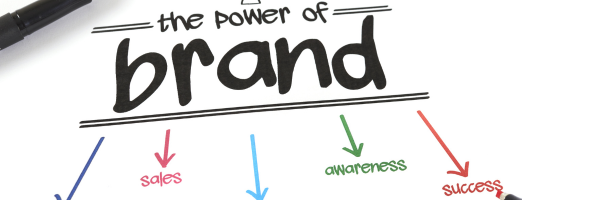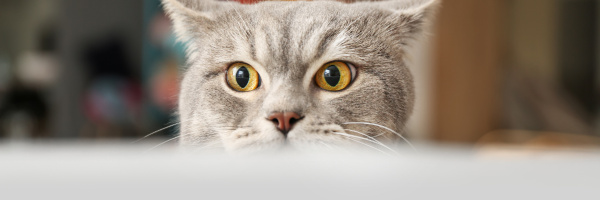3 Things For July 3rd, 2025
Staying True to Purpose, Brand Consistency = Trust, Borrowing Brilliance and using “Flavor Text”

What is the Purpose? Who is the Audience?
When we get off track, like most of us do, it’s good to get back to two basic questions: What is our purpose and who is our audience? For example, is the purpose of your social media to get likes and engagement or to build trust and credibility? If you can do both, that’s great but if your real purpose is to reach the right audience to build trust and credibility, don’t trade that in for a surprising post that stops the scroll while also hindering credibility. All marketing has a purpose; determine what that is first. Then you can ask if the post, ad, page, etc. is helping towards that end. We also all have an ideal audience/client. We know when we come across someone who is perfect for our solution. We get giddy because we’re certain they will be thrilled with what we have to offer. It’s intoxicating when such a match is found. The language in your marketing should speak directly to that person. Because we also want them to feel giddy when they discover us. If you’re trying to speak to everyone, you’re speaking to no one and no real connections are made. When you find yourself lost in the weeds, remember to ask yourself: What is the goal? Start with the end in mind and work your way back. Don’t be too hard on yourself for getting off track, a little wandering is good for creativity. But don’t wander so far that you lose track of what you’re trying to accomplish. Get creative with tactics as long as they are in line with the strategy, purpose, and audience. PS: Want to surprise and delight (while staying on purpose and brand of course) don’t miss Scott’s thing on “flavor text” below! But first, Kate tells us how to build trust with our most valuable asset.
The Compound Effect of Consistency
Why Your Brand is Your Business’s Most Valuable Asset Picture this: Two contractors show up to give you quotes. The first arrives in an unmarked van, wearing a plain t-shirt, with a handwritten estimate on a scrap of paper. The second pulls up in a clean, branded vehicle, steps out in a professional uniform with their company name displayed, and hands you a polished proposal with clear contact information. Or consider this: You’re researching services online and find a website with outdated information, a disconnected phone number, and broken links. Then you visit another site that’s current, professional, and clearly shows you who they are, what they do, where they’re located, when they’re available, and how they can help you. This second site demonstrates professional expertise through detailed service information, helpful resources, and clear contact methods. Which businesses would you trust? The Trust Factor Customers don’t just buy products or services—they buy confidence. They buy the assurance that you’re going to deliver what you promise, when you promise it. When your brand is consistent, you’re building that confidence with every interaction. When it’s scattered or constantly changing, you’re asking customers to take a leap of faith every time they choose you. Small businesses face more competition than ever. A committed brand cuts through that noise. It helps you stand out not because you’re the loudest, but because you’re the most memorable and trustworthy. The Compound Effect of Consistency Every consistent touchpoint builds on the last one. Your customer sees your professional Instagram post, then visits your well-designed website, then receives your branded email confirmation, then walks into your cohesive storefront. Each interaction reinforces their decision to choose you. They’re not just buying once—they’re becoming loyal customers who return and refer others. The truth many small business owners miss: brand isn’t separate from business—it IS the business. When you commit to building a strong brand, you’re increasing the value of your entire business. You’re creating something that customers will pay more for, employees will be proud to represent, and competitors will struggle to replicate. The Cost of Inconsistency Too many businesses sabotage their success by treating their brand like an afterthought. They change their messaging every few months or let their online presence go stale. Even worse, many try to save money by moving marketing responsibilities to existing employees who already have full plates—the receptionist who’s supposed to manage social media between answering phones, or the office manager tasked with updating the website when they have no understanding of SEO. When marketing becomes someone’s secondary priority, consistency inevitably suffers. Customers get confused. Trust erodes. Sales suffer. The Power of Compound Growth As a local business, every consistent brand interaction builds on the previous one. Each branded touchpoint—from your vehicle wrap to your website, from your uniforms to your follow-up emails—compounds into something greater than the sum of its parts. Your committed brand presence creates exponential returns in recognition and customer loyalty. The businesses that understand this become the go-to choice in their community—the ones customers think of first and recommend without hesitation.
Borrowing Brilliance: Your Next Big Idea Might Come from Outside Your Industry.
Most businesses play it safe, operating within an echo chamber where they study the same competitors and recycle the same ideas. This inward focus rarely excites or builds real loyalty. But what if the key to creating more memorable experiences came from an unlikely source? By borrowing brilliance from other disciplines, you can challenge your own biases and find a powerful competitive advantage.
A perfect case study comes from a field that has mastered engagement: game design. For decades, designers have used “flavor text”—short, atmospheric lines that give personality to items and actions. This text isn’t strictly necessary, but it sparks curiosity and makes the experience feel human. A collectible card that reads, “Hatred outlives the hateful,” tells a four-word story. A video game item described as “Small pebbles… Can be thrown at foes. Quite thrilling,” adds a wink of personality.
This principle translates directly to the business world, turning mundane moments into memorable connections:
- Humanizing Dead Time: Games use loading screens to share tips, lore, or jokes. Similarly, web services like Notion turn a wait into a moment of brand connection by flashing messages like “Warming up the workspace.”
- Reimagining Errors: A dead end in a game is an opportunity for personality. This thinking led to the modern 404 page. Blizzard’s official site shows a shattered screen with the text, “Grats, you broke it,” a direct ancestor to Netflix’s playful “Lost your way?” pop culture references.
- Filling the Void: An empty inventory in a game is an invitation to explore. This philosophy now fills what would be dead space in modern apps. An empty Dropbox folder shows a cheerful drawing, offering subtle encouragement instead of a blank screen.
This mindset isn’t just digital. Think of Ben & Jerry’s witty commentary on its ice cream pints or Disney World turning construction walls into part of the show with signs that read, “Please Pardon Our Pixie Dust.”
Many brands never try this because they fear breaking professional norms. But history is a cautionary tale: Blockbuster didn’t fail because it tried something new; it failed because it clung to what was safe. Flavor text is the canary in the coal mine. If you’re afraid to let your brand have a human moment, what bigger opportunities are you missing? Brands don’t fail because a witty tooltip made someone roll their eyes—they fail because no one remembers them at all.



